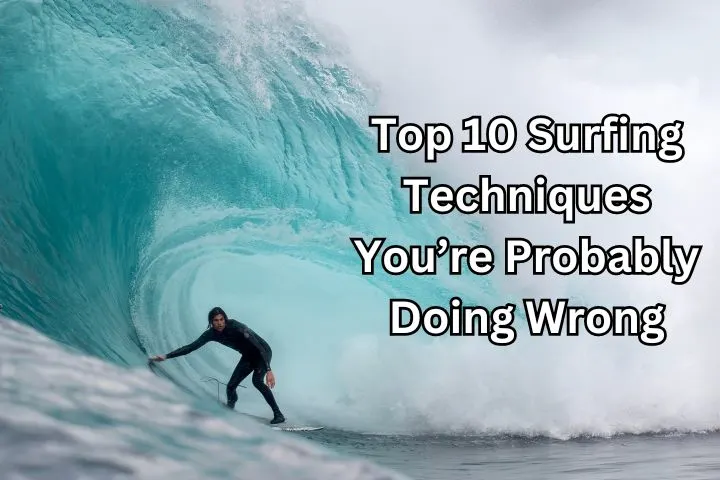You’re out in the lineup, the swell is perfect, and the wave you’ve been waiting for starts to roll in. You paddle hard, feeling the rush of energy beneath your board, but something’s off. You miss the wave, or worse, you wipe out. Ever wonder why?
Even experienced surfers get stuck making the same small mistakes that can keep them from nailing that perfect ride. Let’s break down some of the most common mistakes and how to fix them.
1. Paddling too far back on the board

A common mistake is paddling with your chest too far back, causing the nose to lift and creating unnecessary drag. This reduces your speed and makes it harder to catch waves.
Position yourself so your board stays flat on the water. This will maximize your paddling efficiency and allow you to glide smoothly into waves.
2. Poor duck dive technique

Failing to sink both the nose and tail deep enough during a duck dive will leave you stuck in the wave’s turbulence.
To dive effectively, push the nose down hard with your arms and use your foot to sink the tail. Mastering this technique helps you clear larger waves with ease.
3. Popping up too late

Waiting too long to pop up often results in a missed wave or wipeout. Timing is everything! Aim to pop up just before the wave starts to break.
This way you catch the wave early, gainingcontrol and speed early on as you ride down the face.
4. Wrong foot placement on pop-up

Misplacing your feet during the pop-up throws off your balance and stability from the start. Focus on landing with your front foot under your chest and your feet shoulder-width apart.
A well-executed pop-up sets the foundation for a smooth and controlled ride.
5. Over-leaning in turns

Too much leaning during turns will make you loss speed or end up wiping out. The key is to use subtle weight shifts and leaning on the board rail for carving.
Instead of forcing the turn, let the board do the work, making for more flowy and powerful maneuvers.
6. Ignoring the wave’s energy zones

Many surfers drift away from the wave’s pocket, the most powerful part of the wave. Staying close to this energy zone keeps you connected and allows for more speed and control.
By hugging the pocket, you better harness the wave’s power and set up for maneuvers.
This is a crucial tip often seen in advanced surfing. OMBE has many more tips full surf training on these advanced aspects of improving your surfing.
7. Poor timing on bottom turns

Nailing the bottom turn is critical for setting up the rest of your ride. If you turn too early, you’ll lose speed. Too late, and you’ll miss the section.
Focus on timing your bottom turn right as the wave hits its peak for maximum control and speed.
8. Not looking where you want to go

Your body follows where your eyes are looking. If you’re not looking down the line or at the section you want to hit, your turns will be slower and less precise.
Always direct your eyes toward where you want to go, and your board will follow!
9. Not compressing during turns

Riding too upright during turns limits your power and fluidity. To power up your turns, bend your knees and compress into your body as you carve. Then decompress (offload) as you exit the turn.
Mastering compression & decompression with the right timing will give you better drive, speed, and smoother transitions between maneuvers.
10. Skipping the kicking technique in paddling

Many surfers rely only on their arms for paddling, but incorporating a subtle flutter kick adds extra propulsion.
While it won’t replace strong arm strokes, the kick helps maintain momentum and gives you an edge when paddling into waves and catching them more efficiently.

